Each year I come away from the TED Conference with a thought that helps me tie together the diverse ideas, concepts, and people that make up this extraordinary week. This year the theme of TED for me was a web. Not 'The Web,' but the concept of a connected community.
It began, strangely enough, with the main stage presentation of Janet Echelman, a sculptor who's been working for the past twenty years in netting. Watching her images of large, billowing, interconnected woven thread, I found myself taken by the idea of how tiny knots could turn rope into form. Those knots seemed to me to be a beautiful metaphor.
Then, there was Fiorenzo Omenetto, a scientist working on understanding and innovating using silk. His use of webs was less aesthetic, and more focused on innovation... but the idea 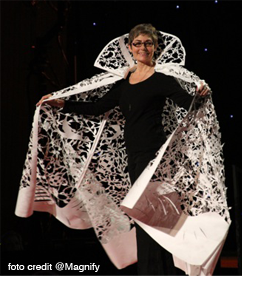
of the power of a web continued to build as I sat in the theater in Long Beach.
And then there was Beatrice Coron, an artist who's work is entirely cut out of paper. She entered the stage wearing a long flowing cape cut out of paper, and as she talked about the beauty and complexity of making an image out of a web of paper the metaphor was complete.
Webs are powerful, organic, beautiful and essential.
Which bring me to TED itself, and what it is evolving into.
When I began attending TED it was a private, closed, intellectually intense week of presentations and conversations. It was a conversation, not a community. But then, in 2006, Chris Anderson, TED's curator, made the decision to put the TED Talks online. It was a huge gamble. For attendees, known as TEDsters, there was fear that the specialness of the event would somehow evaporate. And for TED itself, there was no evidence that the still small web video audience would watch the videos, or that sponsors would support the cost of encoding, hosting, and streaming the files.
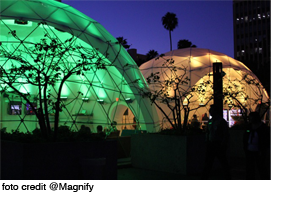
Today, all of that is history.
TED Talks have been viewed more than four hundred million times on line. And sharing these talks has had a major impact on TED itself. But, rather than diminish the specialness of the event, it has amplified it tremendously. TED isn't any longer a week, or a place, or a limited group of people.
Ted has gone from closed to open.
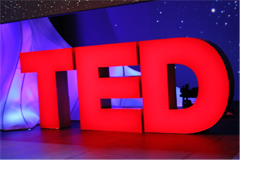
What's interesting of course is that TED has gone 'open' as the world has opened up. Bandwidth is ubiquitous. Content creation and consumption tools are now in more and more hands. And video itself is evolving from a passive entertainment medium to a powerful, global teaching tool.
At this moment, the Web of TED connects ideas and individuals around the world.
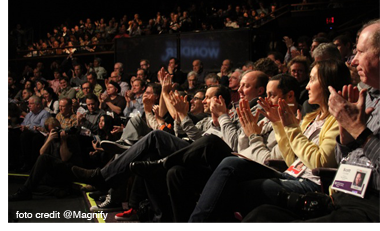
Sitting in the hall in the Long Beach conference center video beamed in from the international space station, from Pakistan, Madagascar, and the Sudan. Chinese architect and activist Ai Weiwei's Shanghai studio was demolished, by order of the Chinese government, on 11 January 2011. As he is currently being held by the Chinese government, he spoke to us via a satellite broadcast.
Ideas were streaming into Long Beach and streaming out to the globe. A massive, real time, connected world.
A web of ideas.
In the next few weeks, TED will publish videos from Microsoft's Bill Gates, Filmmaker Morgan Spurlock, Al Jazeera's Wadah Khanfar, General Stanley McChrystal, Dinosaur Digger Jack Horner, and Poet Sarah Kay. Free, open and sharable with the world. At the same time, the idea of TED has exploded around the world, with locally conceived and produced events called TEDx now blooming with stunning speed. There are now, on average, three TEDx's produced every day around the world.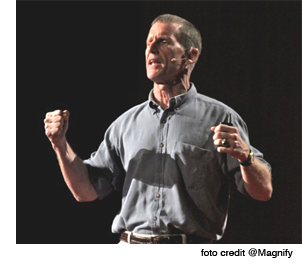
What's changed in the past seven years?
Almost everything.
The first time I attended the TED conference, it was a private, virtually unknown gathering of scientists, philosophers, artists, and technologists. For three days, the stage was full of 18 minute TED talks -- a stunning collection of mind blowing ideas, revelations, and powerful emotional stories.
I left TED with stories to tell, knowledge to share, and a sense of privilege that was both empowering and a bit uncomfortable.
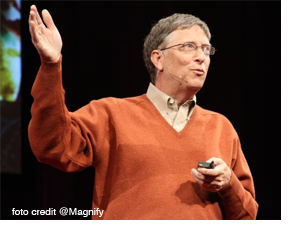
Why did I deserve to know these things? Could I turn that knowledge into action? It was a great gift, but one that seemed like it had the wrong delivery system. Knowledge should be shared, not hoarded.
The year was 2005. Web video was just coming on line.
In the next seven years, the world became more open, and so did TED.
The shift from closed to open is a powerful change, and talking with TED Curator Chris Anderson, you get the sense that at times he's stunned at the speed and growth of TED and the movement that it has fostered.
TED's mission -- "leveraging the power of ideas to change the world" -- may have been impossible in the world of 2006. But in the new open connected world, it may just be happening.
